63 F. high in the Twin Cities Tuesday.
66 F. average high on September 29.
67 F. high on September 29, 2014.
September 30, 1995: Lightning started a house on fire in Washington County.
September 30, 1985: 4 inches of snow fell in Ely, with just a trace at the Twin Cities
Fair Weather Holding Pattern Into The WeekendTo
paraphrase Charles Dickens: it's the best of times - and the worst of
times. No relief for California's mega-drought. Flooding rains are
swamping the east coast with a potential hurricane strike by late week.
We'll have to keep an eye on "Joaquin"; model track forecasts are all
over the map. Literally. Confidence levels are very low.
For
years I've been observing that weather, increasingly, is getting
"stuck", stalling for extended periods of time. I have no idea if this
is another symptom of climate disruption, but jet stream winds are more
erratic than I can ever remember. When weather stalls bad things unfold:
epic droughts and biblical floods. The same blocking or holding pattern
flooding much of the east this week will keep us sunny, cool and calm.
Like Palm Springs in November.
A perpetual ridge of high pressure keeps us dry into the weekend; the next chance of rain
next Tuesday at the earliest.
No frost in sight close to the metro; highs mostly in the 60s. NOAA's GFS model has a few 70s into mid-October.
Minnesota gets the better end of the weather deal. For now.
* Latest data, track and intensity projections from the
National Hurricane Center.
Joaquin's Projected Track.
You may get a nose-bleed or vertigo looking at this graphic - scores of
models hinting at an eventual northwest turn in the projected track,
possibly toward the Outer Banks, Norfolk and the Chesapeake Bay.
Confidence levels are still low - hopefully the models will come into
rough alignment later today. Source: NOAA NHC and
AerisWeather.
 GFS Solution
GFS Solution.
This animation is from the 18z run Tuesday, but it showed a westward
track in Joaquin's projected track, the hurricane getting sucked into a
broad cyclonic circulation around a sprawling low pressure system over
the southeastern USA. Will it stay offshore or "hook" inland near
Norfolk or even New Jersey? It's too early to tell. But I still have a
bad feeling about Joaquin. I hope I'm wrong.
10 Years After Rita, We Still Need Better Hurricane Storm Surge Prediction. Here's an excerpt of an interesting story at
The Huffington Post: "...
Although
wind and storm surge are both important components of a hurricane,
storm surge is more deadly and causes most of the property damage. It is
still difficult for these models to accurately capture the intensity of
a storm, but they have shown significant improvement during the past
decade, especially at predicting the track of the storm. Storm surge
modeling, however, is in a less advanced stage. It is true that there
have been improvements, but the National Hurricane Center still relies
primarily on one model, called the SLOSH model, which was developed
decades ago. Recently, however, other models have demonstrated
significant predictive capability and are undergoing adoption by the
National Hurricane Center to enhance storm surge predictions..."
Alerts Broadcaster Briefing:
Issued Tuesday afternoon,
September 29, 2015.
*
Confidence levels remain very low
with Tropical Storm Joaquin. The computer models are still (literally)
all over the map with projected path and intensity. The storm should
become a hurricane by Wednesday.
* The ECMWF or "European" model whisk Joaquin harmlessly out to sea, but
it's still much too early for complacency.
* NOAA's HWRF and the Canadian (GEMS) model both bring a very strong Hurricane Joaquin into the Norfolk/Chesapeake Bay area by
Saturday.
The odds of this verifying are 1 in 3 but rising. Right now the
probabilities suggest that the bulk of Joaquin's wind and surf will
remain just offshore, but I wouldn't dream of letting my guard down
right now for facilities from the Carolinas to Boston.
* What we have right now is a). low confidence due to b). dueling models.
The model I put the most stock in, the ECMWF, does take Joaquin into the Atlantic with no disruption to east coast facilities.
This is an important data point. All other things being equal the
"Euro" tends to do a better job with tropical systems, but it's not
infallible. No model is. The fact that other, high-resolution models,
including the National Hurricane Center's hurricane model, the HWRF,
still brings Joaquin inland over the Chesapeake Bay
Saturday is still troublesome.
This is why I am not (totally) dismissing or downplaying the risks from this tropical system. I was hoping for more clarity today as model solutions aligned. That, unfortunately, has not happened.
Canadian Solution: Saturday Night.
Another reason why I'm not letting my guard down, not yet. The Canadian
(GEMS) model is in line with HWRF, showing a major hurricane impacting
the Mid Atlantic region by
Friday and
Saturday.
The odds are relatively small, but it's premature to discount any
models right now, until Joaquin is swept up by prevailing winds and
either tracks harmlessly into the Atlantic, or is pulled inland,
"hooking" northwest around a broad area of low pressure over the
southeast. Source: WeatherBell.
HWRF Projected Track. NOAA NHC's high-resolution hurricane model, the HWRF, continues to pull a strong hurricane into the Mid Atlantic by late
Friday or
Saturday.
The probability of this solution verifying is low, but not zero. We
need to remain at a high state of readiness in case this scenario turns
out to be closer to reality. Source: WeatherBell.
HWRF Solution: Midday Saturday. But 18z
Saturday
the HWRF shows an intense, Category 3 storm just east of the Outer
Banks of North Carolina. The HWRF has been fairly consistent in pulling
Joaquin into the east coast of the USA. Right now we're looking for
consistency from model run to model run, and between the models
themselves. Unfortunately the spread in track predictions couldn't be
farther apart, thus the (very) low confidence level with Joaquin.
HWRF Solution: Saturday Evening.
Let's hope this solution doesn't verify - showing a potential direct
hit on Norfolk and the Chesapeake Bay, hinting at major flooding for
coastal Maryland, Delaware and New Jersey, with severe tidal flooding as
far north as Washington D.C., Annapolis and Baltimore. The odds of this
solution verifying are small (between 20-35%) but the fact that HWRF is
consistently pulling the storm inland is cause for ongoing concern and a
heightened level of paranoia.
WRF Solution: Midday Thursday. Another high-resolution model, NOAA's WRF, shows a small but intense Hurricane Joaquin thrashing the Bahamas by midday
Thursday, virtually stationary.
GFDL Track.
Like the ECMWF and GFS NOAA's other hurricane model, the GFDL, sweeps
Joaquin out to sea, perhaps a risk to Bermuda and slow-moving whales,
but probably not the east coast.
Extreme Flash Flood Potential.
Many rivers in western Virginia are already out of their banks, and
even if Joaquin doesn't hit the east coast the plume of tropical
moisture associated with a very slow-moving low pressure system will
squeze out some 5-10" rains over the next 3-4 days from the Carolinas
and Virginias into New England. Major urban centers like Washington D.C.
and New York may experience serious flash flooding, even if the track
of Joaquin remains well out to sea. Be prepared for a lot of water
between now and
Saturday.
Summary:
This is one of the toughest hurricane forecasts I've had to make in 30
years. The truth: we still don't have enough agreement in the models to
say Joaquin is moving out to sea, or definitely impacting the USA. I
would make sure facilities from the Carolinas to New England are
prepared for a direct strike, increase readiness among staff, but we
need more data, another model run or two before confidence levels
increase to the point where we can make a specific call on track and
intensity. I wish we could give you more to go on. But the key operative
phrases are 1). stay tuned, and b). stay alert. If you're not just a
little bit paranoid you're probably not paying attention.
More updates
on Wednesday, when I HOPE the situation with Joaquin crystalizes a bit.
Paul Douglas, AerisWeather.
Fall Foliage Season Delayed by Record Warmth. No kidding. Here's the intro to a story at
USA Today: "
One
of the warmest Septembers on record is delaying fall foliage in many
parts of the country, though a few spots are beginning to see some
color. Despite the delay, experts expect the peak leaf-peep show to go
on as scheduled in October and November. "The significant late-summer
(and now early fall) warm spell has slowed the advance of color
development," said Michael Snyder, the chief foliage forecaster in
Vermont, where fall colors typically bring 3.5 million visitors and $460
million to the state..."
* Latest Minnesota Fall Color map
here, courtesy of the DNR.
 Warming Up Again
Warming Up Again.
Long-range 500 mb guidance (GFS) shows another ridge building over much
of the USA within 2 weeks, hinting at another stretch of abnormally
mild weather, probably a few 70s within 7-14 days. Winter is coming -
but it doesn't seem to be in any great hurry this year.
 No Canadian Slaps
No Canadian Slaps.
The next few nights will be about as chilly as it's going to get for
the next 2 weeks, a mild, zonal, west to east jet stream flow aloft
keeping us milder than average. The GFS model has readings near 70F on
October 14. Don't pack away the shorts just yet.
Precipitation Required to End Drought. I didn't realize how dry much of Montana and Wyoming is, or the western Carolinas for that matter. Map source:
AerisWeather.
Smog Kills. Americans Deserve Much Stronger Protections. Here's an excerpt of an Op-Ed at
Politico: "...
The
science supporting stronger standards is now more compelling than ever.
Literally thousands of studies now link ozone to an array of serious
health impacts, including bronchitis, asthma attacks, emergency room
visits, hospitalizations and premature deaths. The research shows these
harms occur at levels well below those allowed by the current standard.
Kids, senior citizens and asthmatics are especially at risk. Given the
wealth of the evidence, the decision on whether to strengthen the
standard is a no-brainer. The crucial question is how much to strengthen
the standards..."
The Connection Between Cleaner Air and Longer Lives.
The New York Times reports - here's a clip: "...
As a fight brews over President Obama’s new use of the law to address global warming, it’s worth re-examining the vast difference
the law has already made in the quality of the air we breathe, and in
the length of our lives. Numerous studies have found that the Clean Air
Act has substantially improved air quality and averted tens of thousands of premature deaths from heart and respiratory disease.
Here, I offer new estimates of the gains in life expectancy due to the
improvement in air quality since 1970 — based on observations from the
current “smog capital” of the world, China. (To learn more about how
this was calculated, click here.)..."
Graphic credit above: "
Estimates of three life-years saved per 100 microgram decrease of total suspended particles per cubic meter." Michael Greenstone; E.P.A.
Renewables Overtake Coal in the U.K. Energy Mix For The First Time.
Gizmag has the details; here's an excerpt: "
Thanks
to an increase in solar panels and wind turbines, as well as a
particularly sunny and windy quarter, renewable energy has supplied a
record 25 percent of the UK’s energy mix in Q2 2015, leapfrogging coal
for the first time to come into second place behind gas fired
electricity. It’s nearly a 10 percent increase on the same period last
year..."
Photo credit above: "
Renewable energy
sources (combined solar, wind and biofuel) have overtaken coal, the most
polluting energy source, in the UK for the first time."(Credit:
Shutterstock)
Why An Oil Guy Believes Solar Has a Big Future. Here's a snippet of an Op-Ed at Fortune: "I’ve
worked on oil platform design. I’ve worked with oil companies on four
continents (North and South America, Europe, and Asia). I live in
Houston. And I spend about three-quarters of my time working on oil and
gas issues. In short, I’m an oil guy. But I am also bullish on solar.
There is no contradiction here. The point of energy is to move people
around the world, to keep us warm (and cool), and to power an industrial
economy that has created more wealth in the last 150 years, by far,
than in any other time..."
News is Different. Every business is being disrupted by new technologies and new habits today, but Dave Pell at
NextDraft
argues (rather convincingly) that news is different. We don't want to
pay for new - we don't want to see ads either. In the end WE will be the
ones with fewer outlets of quality news that adds value and relevance
to our lives. We need new business models, and quickly. Here's an
excerpt: "...
It’s hard to feel sorry for the news organizations that
have utterly failed to pay enough attention to the top story of a
generation. It’s one thing to bury the lede. It’s another to allow it to
bury your industry. But if you can’t feel sorry for news orgs, then at
least feel sorry for yourself. Because news really is different. The
demise of reporting outfits is not only about the loss of jobs and the
diminishing of fortunes, it’s a severe blow to society. It represents
the potential silencing of the only voice many people have..."

TODAY: Sunny & spectacular. Winds: SE 8-13. High: 65
WEDNESDAY NIGHT: Clear and cool. Low: 43
THURSDAY: A cool-blue sky. Winds: E 8-13. High: 63
FRIDAY: Partly sunny, more free A/C. Wake-up: 42. High: 61
SATURDAY: Sunglasses required. More sunshine. Winds: E 10-15. Wake-up: 41. High: 62
SUNDAY: Mix of clouds and sun. Winds: NE 8-13. Wake-up: 43. High: 63
MONDAY: Three guesses: sunny. Wake-up: 43. High: 62
TUESDAY: Showers, possible thunder. Wake-up: 45. High: 61
Photo credit: Paul Sundberg.
Climate Stories....
Why Shell Quit Drilling in the Arctic.
Bloomberg Business has some perspective on why they've thrown in the towel, at least for now; here's a clip: "...
After
spending $7 billion over several years to explore a single well this
summer, Shell said in a statement that it "found indications of oil and
gas … but these are not sufficient to warrant further exploration." This
contrasts sharply with Shell officials' statements as recently as July
and August that based on 3D and 4D seismic analysis of core samples, its
petroleum geologists were "very confident" drillers would find
plentiful oil. The geologists' expectations were the main reason Shell
spent all that money on a project that entailed much-higher-than-average
operational risks and international environmental condemnation..."
Glacier Melt Shows a Climate Change Tipping Point. We Must Pay Attention.
The Guardian has details; here's the intro: "
Mountain
glaciers and humans have coexisted for roughly 200,000 years, but that
long idyll appears to be ending. The earth’s 190,000 glaciers, sentinels
of climate change that appear to be more sensitive to the climate than
are humans, are disappearing at an unprecedented pace, the canaries in
climate change’s coal mine. It is all being driven by human activities,
and it has been happening for three decades. The fate of both humans and
glaciers will depend on drastically reducing carbon dioxide emissions
during the next decade..."
Photo credit above: "
Glaciers and humans coexisted until the latter’s decisions began making the former disappear." Photograph: Andrew Harnik/AP
Is The Fossil Fuel Industry, Like the Tobacco Industry, Guilty of Racketeering? The Guardian has the story; here's an excerpt: "...
Coinciding
with the InsideClimate News revelations, a group of climate scientists
sent a letter to President Obama, his science advisor John Holdren, and
Attorney General Lynch, calling for an investigation
“of corporations and other organizations that have knowingly deceived
the American people about the risks of climate change, as a means to
forestall America’s response to climate change.” In 1999, the Justice
Department filed a civil Racketeer Influenced and Corrupt Organizations Act
(RICO) lawsuit against the major tobacco companies and their associated
industry groups. In 2006, US District Court Judge Gladys Kessler ruled
that the tobacco industry’s campaign to “maximize industry profits by
preserving and expanding the market for cigarettes through a scheme to
deceive the public” about the health hazards of smoking amounted to a
racketeering enterprise..."
Photo credit above: "
A petrol pump nozzle at an Exxon gas station." Photograph: Matt Slocum/AP.
Climate Change Activist Takes Aim At The "Most Irresponsible Companies in the World". Here's a snippet from
Mashable: "...
McKibben
struck a note of urgency. “2015 is the hottest year the world has ever
seen,” McKibben said. “It is going to smash the record set in 2014. July
was the hottest month ever recorded on this planet. We see what’s
happening in places like California. The U.S. is about to set a new
record for the most wildfire acres burned. It’s tons of bad news, but
lots of good news, too.” The good news, McKibben stressed, is the speedy
success of the divestment movement that his organization is helping to
spearhead..." (Photo: NASA ISS).
Shell Oil Abandons Controversial Drilling Off Alaska's Shore. Here's a clip from a summary at
NPR: "
Citing
a lack of enough oil to make the project worthwhile, Royal Dutch Shell
Oil is halting its effort to drill for oil off Alaska's shore "for the
foreseeable future." The company has spent some $7 billion on the
exploration project. Shell announced the move
late Sunday, describing what the company called "a clearly
disappointing exploration outcome" in the Chukchi Sea, which is part of
the Arctic Ocean..."
File photo above: Daniella Beccaria/seattlepi.com via AP, File.
China To Put Key Climate-Change Policy Into Action.
Voice of America has the details; here's the introduction: "
China
has agreed to implement a cap and trade program to limit emissions, in
what could be a crucial step in international efforts to combat climate
change. Chinese President Xi Jinping announced the program after he met
with President Barack Obama at the White House Friday. U.S. officials
said the program will go into place by 2017 and will cover some of the
worst-polluting sectors of China's economy..."
File photo credit above: "
Smoke billows from a coal-fired power plant in Beijing, China, Nov. 13, 2014." AP.
China Shows It's Getting Serious About Climate Change. More details and perspective from TIME; here's an excerpt: "The
best thing to come out of a summit between China and the U.S. is a
renewed commitment to fight global warming. China—the world’s largest
polluter—has sought to portray itself as a leader in the global fight
against climate change in recent years. The country has expedited the
development of renewable energy power plants, experimented with
cap-and-trade programs and last year committed to curb its growing
carbon dioxide emissions in coming decades..."
Photo credit above:
Evan Vucci—AP. "
Chinese
President Xi Jinping listens as President Barack Obama speaks during an
official state arrival ceremony for the Chinese president at the White
House in Washington on Sept. 25, 2015."
Limited Progress Seen Even As More Nations Step Up on Climate. Here's a clip from an update at The New York Times: "The pledges that countries are making to battle climate change
would still allow the world to heat up by more than 6 degrees
Fahrenheit, a new analysis shows, a level that scientists say is likely
to produce catastrophes ranging from food shortages to widespread
extinctions of plant and animal life. Yet, in the world of global
climate politics, that counts as progress. The new figures will be
released Monday in New York as a week of events related to climate change comes to an end..."
Photo credit above: "
An area of the Amazon rain forest burned to make way for pasturelands. Brazil has pledged to end illegal deforestation."
Credit Lalo de Almeida for The New York Times.
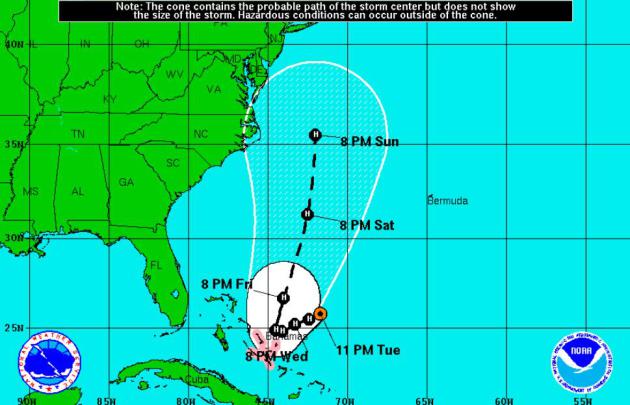
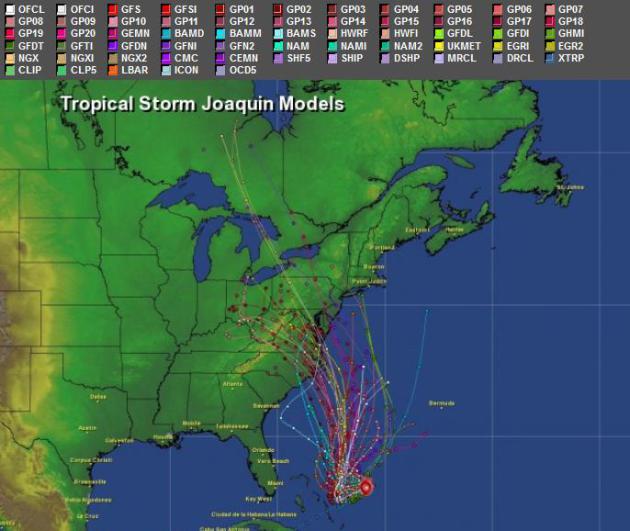
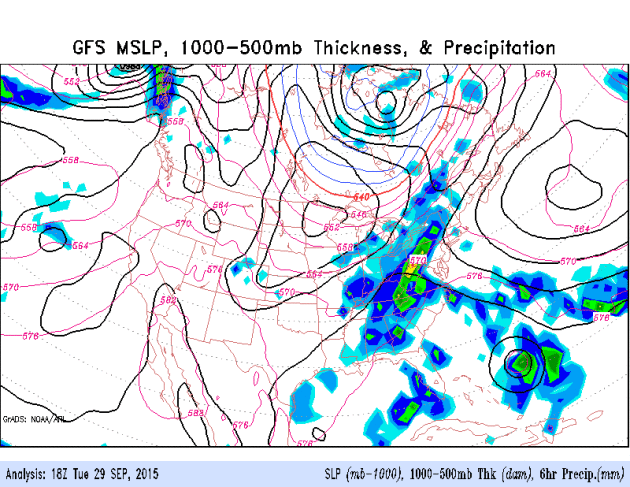
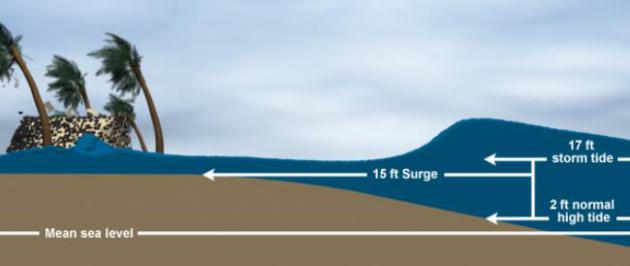








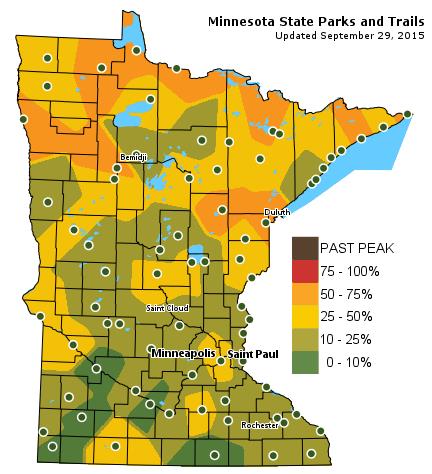
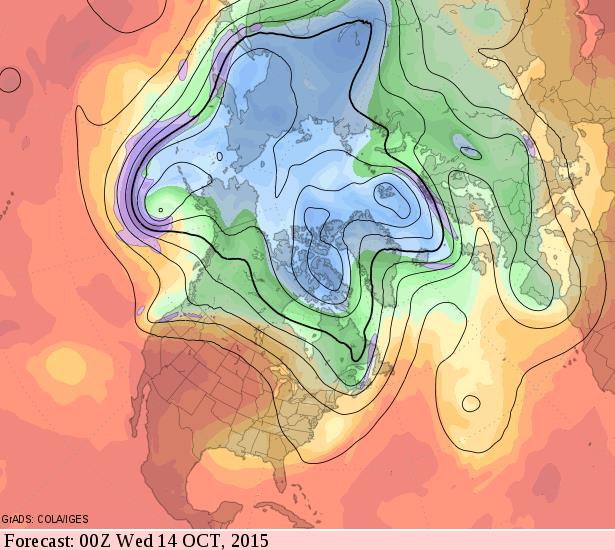
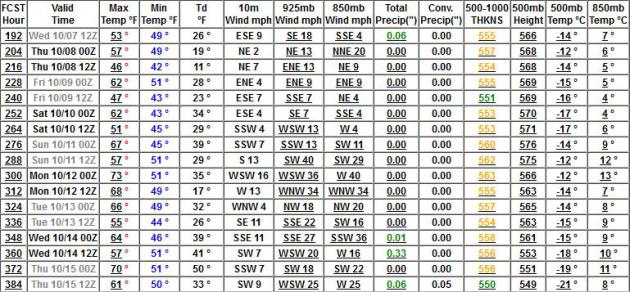
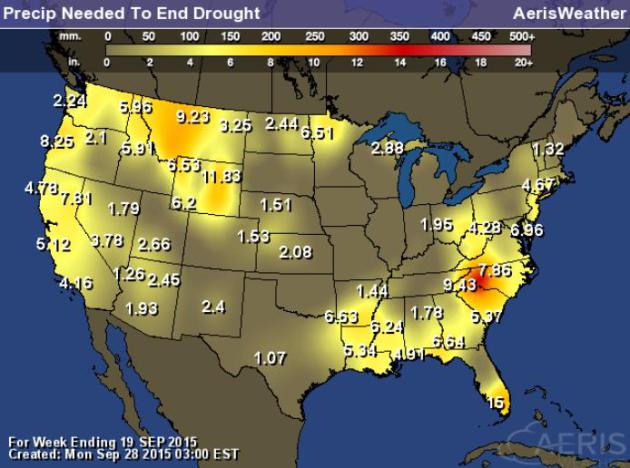
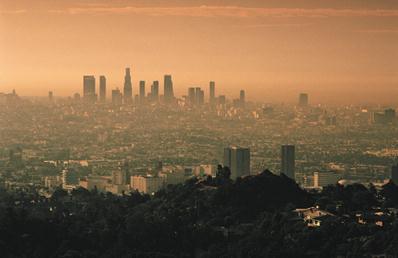
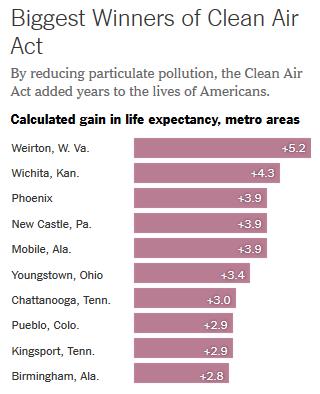



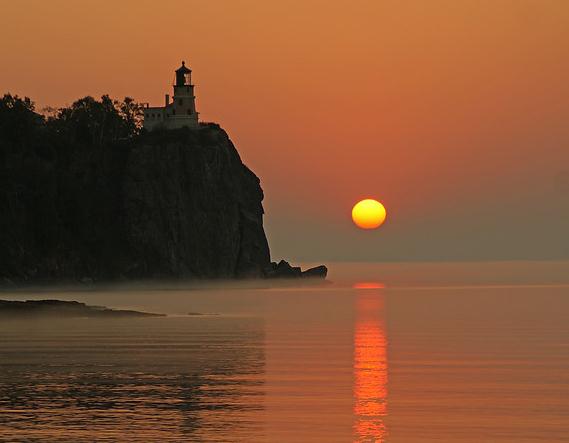
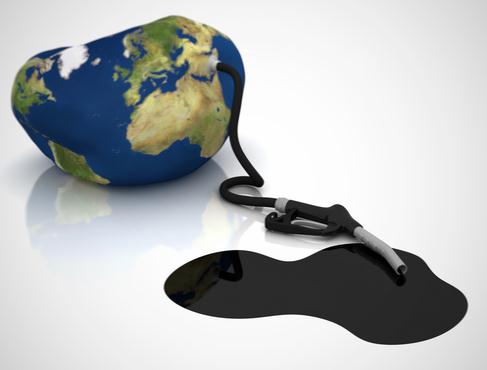
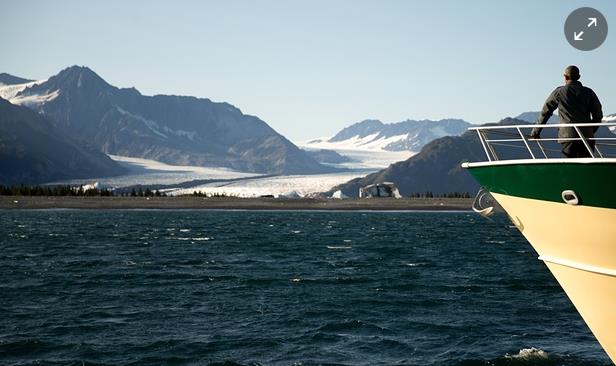
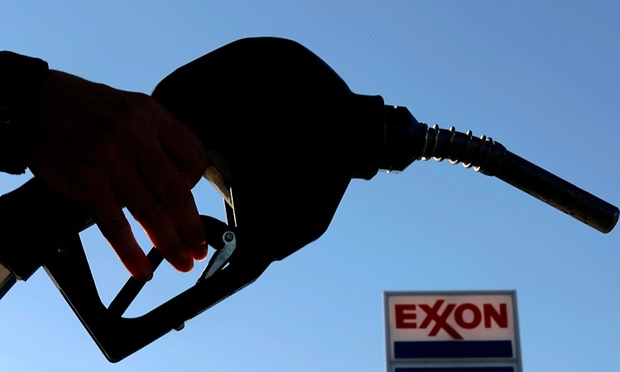

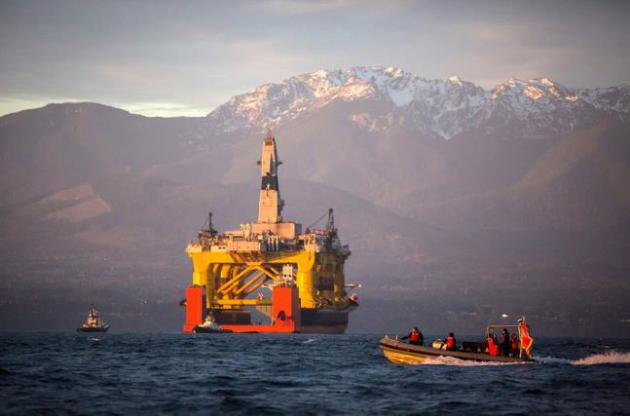

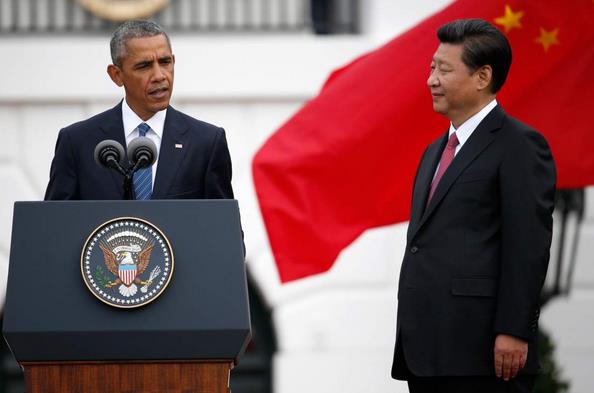
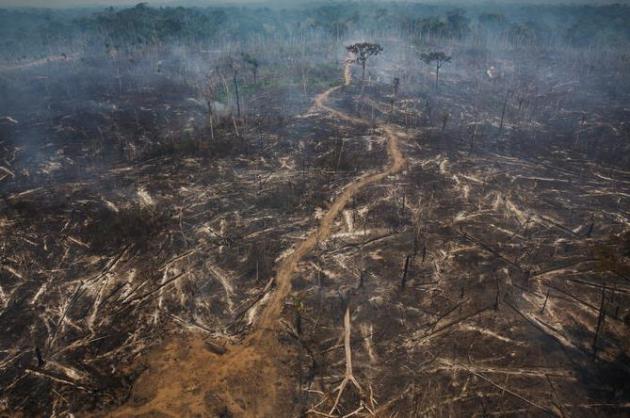
No comments:
Post a Comment